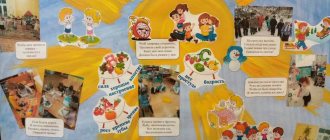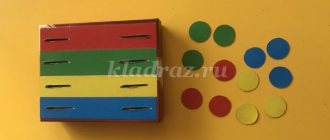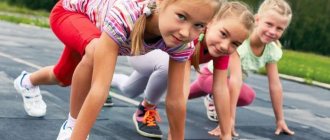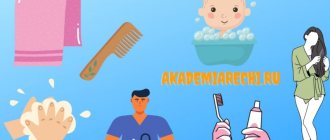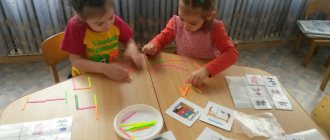8 minutes
Published:October 26, 2016
| (0) |
A healthy lifestyle has already become a full-fledged family culture. Giving up bad habits and focusing on sports have become fashionable. Therefore, more and more people are becoming interested in healthy lifestyles and attracting not only adults, but also children into their ranks. This trend has a positive effect on a person’s overall health, promotes strong immunity, good health, a beautiful figure and a positive attitude. By teaching children a healthy lifestyle, you help them live a long and happy life, full of bright and positive moments. This is the best care for loved ones, which will definitely bear fruit in the near future. A healthy lifestyle is no less important for children than for adults. After all, this is a fundamental principle of child development in the areas of moral and physical culture. The earlier you start the habit of eating right and exercising, the more benefits it will bring in the future.
Components of a healthy lifestyle
The main components of a children's healthy lifestyle are:
- playing sports and introducing physical activity as a regular habit;
- regular walks in the fresh air;
- proper nutrition.
maintaining a healthy lifestyle for the whole family;
All physical activity must be appropriate for the child’s age and take into account the characteristics of his health. Regular exercise under the guidance of experienced trainers is the best option for maintaining a healthy lifestyle for children. The European Gymnastics Center offers you classes in a comfortable environment and on a convenient schedule. A lot of positive emotions, playful training and socialization of each child is the minimum set of services that we offer to each client.
Formation of a healthy lifestyle in children 6-7 years old. consultation (preparatory group)
Formation of a healthy lifestyle in children 6-7 years old.
A healthy lifestyle is the lifestyle of an individual with the goal of preventing disease and promoting health. A healthy lifestyle is a concept of human life aimed at improving and maintaining health through appropriate nutrition, physical fitness, morale and giving up bad habits.
A healthy lifestyle should include:
- attitude towards a healthy lifestyle;
- sufficient physical activity;
- the ability to regulate one’s mental state;
- proper nutrition;
- clear routine of life;
- compliance with hygiene requirements;
- the ability to prevent dangerous situations and behave correctly when they arise.
It has already been proven that the younger the organism, the more harmful it is for it to violate the laws of healthy life. Those health disorders that arise in childhood become more pronounced with age and lead to limited capabilities of the child, a decrease in his working capacity and, ultimately, to serious illnesses. But, fortunately, at any age, the transition to a healthy lifestyle helps to significantly normalize the condition of the child and adult.
An important condition for the implementation of pedagogical work with preschoolers is the formation in a kindergarten of a health-saving space, as on the territory of the institution (planting trees and shrubs to protect against noise and pollution. At the same time, parterre planting of plants is planned in such a way that the plants do not impede ventilation and insolation playgrounds.Plants that emit natural phytoncides are also planted on the territory: bird cherry, juniper, thuja, pine, spruce) and in the premises of the kindergarten (regular ventilation, quartzization of premises, hardening with water and air, rinsing the mouth, walking barefoot on massage mats, wet and dry towels.Acupressure of the feet is performed by walking on bags filled with beans, peas, sewn buttons of different sizes, pebbles).
The formation of children’s ideas, and subsequently their skills, about health and a healthy lifestyle is facilitated by the creation of a subject-based developmental environment in groups. Healthy lifestyle corners are equipped with children's books, coloring books and didactic games on the topic, albums with photographs of the group's children, which capture moments of classes and conversations, physical education classes, sanitary-hygienic and hardening procedures, walks, games, sleep, etc.
An integral part of the health-saving space are exhibitions of specialized and children's literature, as well as posters made as a result of joint activities of children and adults, children's works on visual activities on the topic of healthy lifestyle, information stands for parents.
The formation of the need for a healthy lifestyle should be carried out easily and imperceptibly, unobtrusively, but always with pleasure and sincere interest on the part of both adults and children.
Preschool age is characterized by the rapid development of basic functional systems that contribute to the creation of a stable level of adaptation and ensure the health of the child throughout his subsequent development. During preschool childhood, “profound” changes in metabolism occur, which are associated with the maximum frequency of childhood infections and pose a serious danger to children’s health. But even a healthy preschooler needs careful care and participation from the adults around him. This is due to the fact that a child’s health develops throughout his life.
A child’s attitude towards his health directly depends on the formation of this concept in his consciousness. In preschool children, the following age-related prerequisites can be identified for the stable formation of ideas about a healthy lifestyle.
- mental processes are actively developing;
- positive changes in physical and functional development are noticeable, children try to maintain and demonstrate correct posture;
- Children of senior preschool age are able to independently carry out household tasks, have self-care skills, and make volitional efforts to achieve their goals in play and physical activity.
- At the same time, it should be taken into account that each age period is characterized by its own characteristics, which should be taken into account when working to create a healthy lifestyle.
Children of primary preschool age understand what illness is, but they still cannot give the most basic characteristics of health.
In middle preschool age, children develop an idea of health as “not being sick.” They talk about how they were sick, they have a negative attitude towards the disease based on their experience. When asked what to do to avoid getting sick. Many children answer that you need to avoid catching a cold, don’t eat ice cream on the street, and don’t get your feet wet. It follows from these answers. That in middle preschool age children begin to recognize health threats from the external environment (cold, rain, draft), as well as from their own actions (eating ice cream, getting their feet wet).
In older preschool age, due to increasing personal experience, attitudes towards health change significantly. Children begin to correlate physical education with improving health and in its definition (as, in fact, adults) put the physical component in first place. At this age, children are still intuitive. They begin to highlight both the mental and social components of health (“everyone was screaming there and I had a headache.” With targeted upbringing, training, reinforcing the rules of hygiene in everyday life, and appropriate motivation for physical education, children’s attitude towards their health changes significantly. So, activity , curiosity, mobility, on the one hand, and on the other hand, the mobility of nervous processes, susceptibility to infectious diseases, colds, and allergic reactions in preschool children are important prerequisites for the formation of a healthy lifestyle, making it possible to introduce and teach children the correct attitude towards their health and interaction with the world around us. At the same time, each age period is characterized by its own characteristics, which should be taken into account when working to create a healthy lifestyle.
Preparatory group.
1. Expand the child’s knowledge about himself, his name, surname, age, hereditary characteristics of the body, body type, gait, reaction to certain foods; tell what the heart is for, why it beats, what ears are needed for. Eyes as we move. Let's breathe. We communicate with other people. Represent in general terms human development: baby, preschooler, schoolchild, mother, grandmother, distinguish gender by appearance.
2. Treat your body with care, be aware of the purpose of individual organs, the conditions for their normal functioning. “I have a wonderful skeleton assistant, it helps me stand, sit and protects internal organs: heart, liver, lungs from damage, so I need to take care of it, learn to fall correctly on skis and skates.
3. Introduce different types of hardening, breathing, and corrective gymnastics. Using examples of literary heroes, show ways to take care of your health and body. Talk about the mode of activity and rest, the need to plan your time, about health-improving gymnastics, walking in any weather conditions. Consciously perform physical exercises, understanding their importance for health.
4.Form a system of ideas about the culture of human life; introduce the basic rules of etiquette, behavior, nutrition, and communication at the table.
5.Form a positive assessment and self-image; pay attention to your appearance.
6.Talk about ways a person can take care of his body, about the troubles that await a person who does not follow the rules of life safety. Introduce children to the feelings and moods of a person, show how they are reflected on his face (fear, fatigue, resentment, joy, fear, laughter).
7. Talk about rational rest, develop a strong habit of sports, physical education, and exercise.
8.Talk about the basic rules of safe behavior on the street and indoors.
9.Talk about human qualities: neatness, sociability, pugnacity, kindness, perseverance, politeness, good manners, talent, strength.
10. Learn to take care of yourself, monitor your well-being after physical activity; independently follow hygiene rules, control the quality of washing hands, feet, necks; be able to rest and relax; Eat correctly and gracefully, sit comfortably at the table, do not lean back in your chair, do not place your elbows, and use cutlery.
This differentiation of tasks guarantees accessibility for children and the creation; Thus, the environment is favorable for every child to learn the norms and rules of a healthy lifestyle.
To form a healthy image in preschoolers, special exercises that strengthen the health of children and a system of physical education are necessary. For this purpose, morning gymnastics is carried out daily in kindergarten groups, the purpose of which is to create a cheerful, cheerful mood in children, improve health, develop dexterity, physical strength. Morning gymnastics and special physical education classes in the gym are accompanied by music, which “has a beneficial effect on the emotional sphere senior preschooler, promotes children’s good mood, shapes their ideas about a healthy lifestyle.”
Outdoor games are of great importance for the formation of preschool children’s ideas about a healthy lifestyle. They are carried out in groups, in special classes, during walks and at intermediate intervals between classes. Outdoor games are necessarily included in music classes. Games for younger preschoolers are organized by the teacher, and at older ages such games are most often organized by the children themselves.
In addition to daily morning exercises, special physical education classes are conducted for preschool children. Their goal is to teach children the correct execution of movements, various exercises aimed at developing body coordination and increasing independent motor activity. Classes are held in a special hall, accompanied by music. The formation of a healthy lifestyle for preschool children is closely related to the protection of their life and health. The rules for protecting the life and health of a child are set out in special instructions and methodological letters for preschool workers. In the kindergarten, medical monitoring of children's health is constantly carried out, and preventive measures are taken to strengthen it.
The joint work of preschool educational institutions and families to introduce preschool children to a healthy lifestyle is unthinkable without each other at the present stage of social development.
In this regard, we can talk about the effectiveness of interaction
preschool educational institution and family in forming the foundations of a healthy image will be effective if:
— education of parents on healthy lifestyle issues will be organized in the preschool educational institution;
- if parents are active participants in events dedicated to a healthy lifestyle.
Family healthy lifestyle
Before telling or explaining something to your child, show it by personal example. This will be the best motivation for him, because a son or daughter always strives to be as similar as possible to their parents. Therefore, when talking about a healthy lifestyle, make sure that you yourself do not violate its basic principles. It is quite easy to become a worthy example for your child.
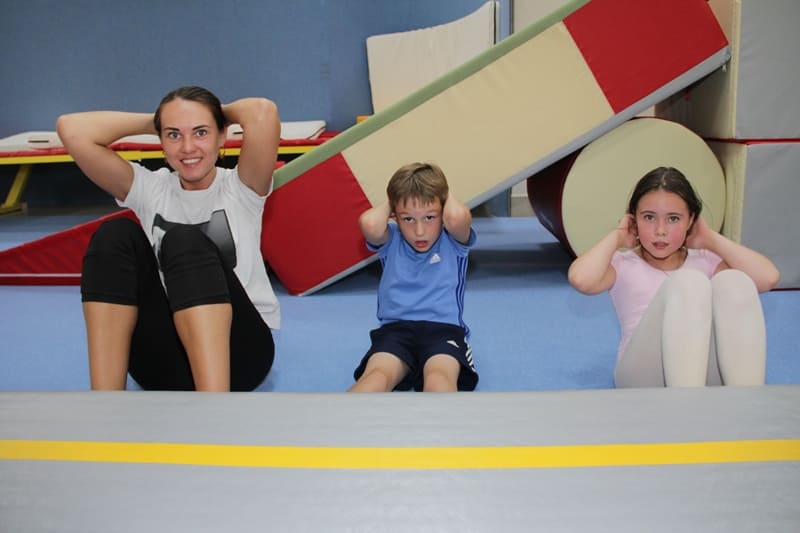
Together everywhere.
Take regular walks. But don't limit them to shopping. Go to the park, go out into nature, visit children's outdoor playgrounds.
Eat the right foods.
Teach your children to eat healthy. Avoid visiting cafes that serve fast food. Add more vegetables and fruits to your diet, and drink more clean water together. Avoid carbonated drinks and packaged juices if possible.
Remember mobility.
Don't forget about ball games, visiting the pool, skiing and skating. A morning run is a great way to recharge your energy for the day ahead, not only for you, but also for your children.
One hobby.
Involve your child in your hobbies. This will not only help in his upbringing and general development, but will also unite the family in an interesting hobby.
Rejection of bad habits.
Remember that a child always looks up to his parents and tries to imitate them in everything. To instill in him a correct perception of the world, give up smoking, alcohol, high-calorie snacks and regular evenings in front of the TV.
Seven rules of a healthy lifestyle for schoolchildren
- Adolescent and Youth Health Center
- This is interesting
- Articles
- Seven rules for a healthy lifestyle...
If you want to study well, be dexterous and skillful, remember a few rules that will help you achieve success in all matters.
Rule No. 1 “Organize your daily routine” It is necessary to sleep, walk, do homework, and eat at the same time. Your body will quickly get used to the regime, it will be easier for it to cope with any load.

Rule No. 2 “Healthy sleep is the key to health”

How many hours of sleep do you need?
- For children
- — 1-2 years — 11-14 hours;
- — 3-5 years — 10-13 hours;
- — 6-12 years — 9-12 hours.
- The duration of sleep for infants and children of preschool and school age necessarily includes daytime sleep. It is an excellent means of rebooting the nervous system, so it should be preserved for as long as possible.
Not getting enough sleep can negatively impact a person's immunity and make them more vulnerable to disease. If you get a good night's rest, your body's resistance to seasonal illnesses (such as the flu) increases. At night, the brain releases chemicals that support immune system recovery.
Rule No. 3 “Move more”

Start your morning with water procedures and do gymnastics. Be sure to walk, preferably in the fresh air, at least 2-3 hours a day. Visit the pool. Swimming will help strengthen your back and abdominal muscles.
Active rest is considered one of the optimal types of physical activity. This could be any sport, cycling, morning jogging or active games in nature. But the best active recreation is walking in nature.
Physical activity is important both for strengthening the muscular system, and for strengthening the muscular system, and for psychological relief, and for strengthening all systems of the body without exception. Therefore, go for a walk, enjoy the fresh air and good mood! The main thing is to dress for the weather and then your physical activity will only benefit your health.
Rule No. 4 “Eat right”

A growing body needs vitamins and minerals, so the diet should be varied. The diet should include dairy products, cereals, vegetables and fruits, berries, and nuts. Drink natural juices, compotes and jelly. It is useful to drink at least 30 ml of clean water. per kilogram of body weight.

Rule No. 5 “Take care of your teeth”
You need to brush your teeth 2 times a day: in the morning - after breakfast, and in the evening - before bed. It is important to brush your teeth properly.
Modern dentists have developed the following recommendations for brushing teeth:
- Before starting brushing, the toothbrush must be rinsed thoroughly;
- You should not use too much toothpaste. For an adult, the strip should not be longer than 10 mm;
- The hygiene procedure cannot take less than 2 minutes, but should not last longer than 5 minutes;
- The brush should be held correctly in relation to the teeth. The tilt angle should be 45 degrees;
- It is necessary to begin the cleaning procedure with the lower dentition, and then move on to cleaning the upper teeth;
- The front teeth are cleaned first, then you need to brush those teeth that are located in the depths of the oral cavity;
- The direction of movement when cleaning the lower teeth is from bottom to top, and when cleaning the upper teeth is from top to bottom;
- The chewing surface of the teeth is cleaned using circular movements;
- After the procedure, the mouth must be rinsed thoroughly;
- After the teeth are cleaned, it is necessary to treat the surface of the tongue. A large number of bacteria accumulate on it, which must be removed. For this purpose, all modern toothbrushes are equipped with a special ribbed surface, which is located on the back of the bristles;
- If possible, after brushing your teeth, you should rinse your mouth with a special mouthwash;
- The brush should be washed thoroughly after the procedure. It must be stored in a glass with the cleaning surface facing up.
Rule No. 6 “Take care of your eyesight”

To have good vision, you must follow certain rules. When watching TV, take 4 steps away from the screen, sit comfortably, and be distracted during commercials. Don't get carried away with working on the computer. You can spend no more than 2 hours a day on the screen.
Complex for improving vision
N. Isaeva’s set of exercises became very famous. It will appeal to those who prefer to exercise while lying down. It is especially useful for those who are on their feet all day at work.
Exercise 1 can be performed sitting, standing or lying down. Look at the space between your eyebrows with both eyes and try to hold your gaze in this position for five seconds. Each subsequent day, add one second until the duration of the exercise reaches one or two minutes.
Exercise 2 Look with both eyes at the tip of your nose and hold your gaze in this position for five seconds. Add one second per day until you reach one to two minutes.
Exercise 3 It can also be performed while sitting, standing or lying down. Look with both eyes at your left shoulder and hold your gaze in this position for five seconds. Add one second per day until you reach one to two minutes per day.
Exercise 4 It is performed similarly to the third, only this time look with both eyes at your right shoulder. Hold your gaze for five seconds. This exercise will also need to be increased to one or two minutes a day.
Exercise 5 Rotate both eyes clockwise, fixing your gaze on the space between the eyebrows and the tip of the nose, then do the same in the opposite direction. Repeat the exercise four to five times.
Rule No. 7 “Don’t do bad things”

What is a bad deed?
An action that is bad is an action that violates generally accepted norms of behavior in society.
Be kind to others, be polite, respect the people around you, and then your life will be more interesting, joyful and fun!
Psychologist of the Adolescent and Youth Health Center of the Vileika Central District Hospital Olesya Vladimirovna Shlyapo
Proper nutrition for a child
Not all children eat what their parents offer them. Many adults complain that the child does not accept vegetables or lean meat, but prefers to eat exclusively one product that is not beneficial for the growing body. Even if the consequences of poor nutrition are not particularly noticeable now, in the future this can lead to the formation of an eating disorder. Therefore, it is extremely important to teach your child to eat the right foods in the right quantities. There are several basic principles that are called “smart plate”.
For the mind.
About a quarter of a child's diet should consist of foods rich in starch (cereals, potatoes, whole grain bread, corn and peas). These are the best sources of easily digestible carbohydrates, without which an actively developing body will not be able to function properly. Add fresh berries and fruits here, and it will be easier for the child to cope with complex mental problems.
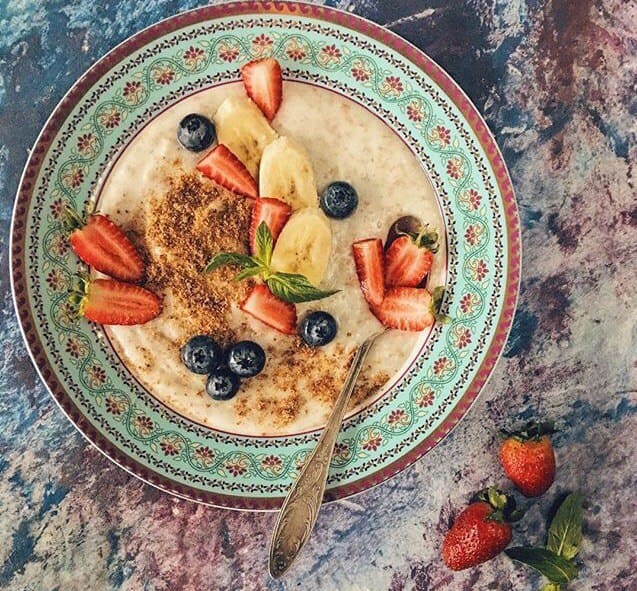
For quality digestion.
Half of the diet is vegetables (cabbage, tomatoes, legumes, carrots, spinach, broccoli, cucumbers, etc.). They also contain a large amount of vitamins and minerals necessary for the growth of the child.
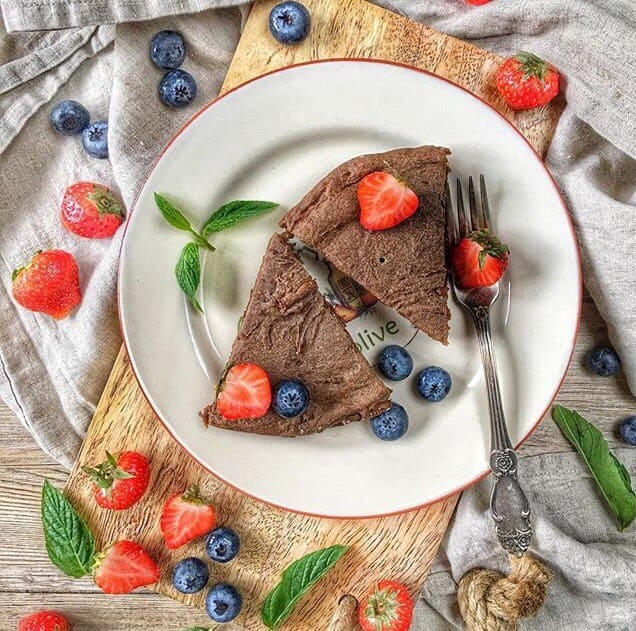
For strong and resilient muscles.
The remaining portion is animal protein, which is best obtained from lean meats (turkey, lean beef, chicken, and fish). Without these products, the child may experience developmental delays.
For fast metabolism.
All children need to drink enough fluids. It is better if it is clean drinking water. As a last resort, homemade juices, compotes and fruit drinks without large amounts of sugar are allowed.
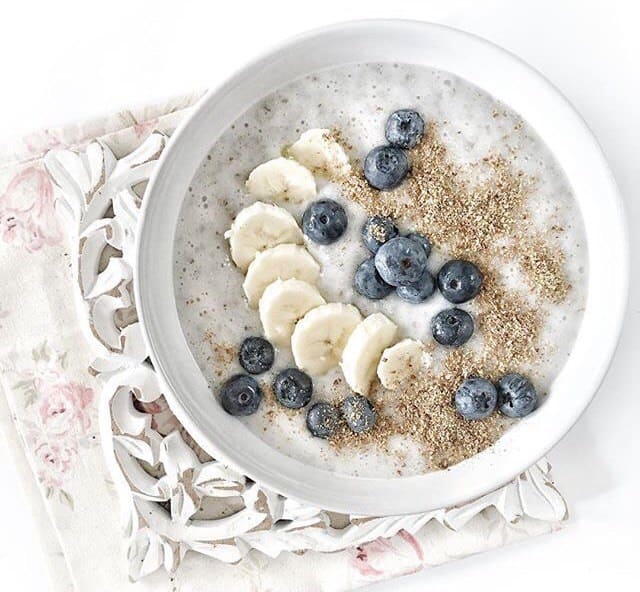
When the problem exists at the genetic level.
If a child is predisposed to obesity, special attention should be paid to his diet. Excess weight can cause serious health problems in the future.
Prohibited foods for children's diets.
Many children love sweets and unhealthy but very tasty foods such as hamburgers and fries at fast food restaurants. But this is precisely where they should be limited. Be prepared to protest and refuse to eat healthy food. Try to redirect your child's attention when he asks for something harmful. Stay calm and don't get emotional. Prove the correctness of your action by personal example. For older children, the principle of encouragement is suitable. Each week spent without harmful products can end with something interesting for the child: a trip to the cinema or to the skating rink.
Sports lifestyle
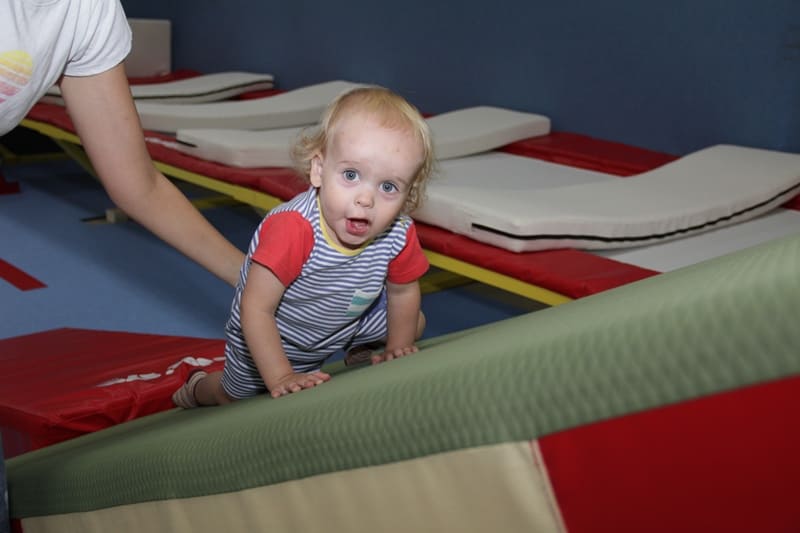
For exercise to become a healthy daily habit, it must be introduced at an early age. When a child has the opportunity to direct his energy in the right and safe direction, he feels comfortable not only physically, but also emotionally. Regular workouts contribute to a surge of strength and good mood. Sports also teach overcoming difficulties, determination, discipline and perseverance. This will help the child already at school. It is very important to focus on those activities that children enjoy. Early physical development can begin as early as 1.5 years. Special exercises should be included in classes from 4 years of age. The European Gymnastics Center has everything you need to teach children a healthy lifestyle. Our coaches have extensive experience working with children of different age categories and will be able to find an approach to any young athlete.
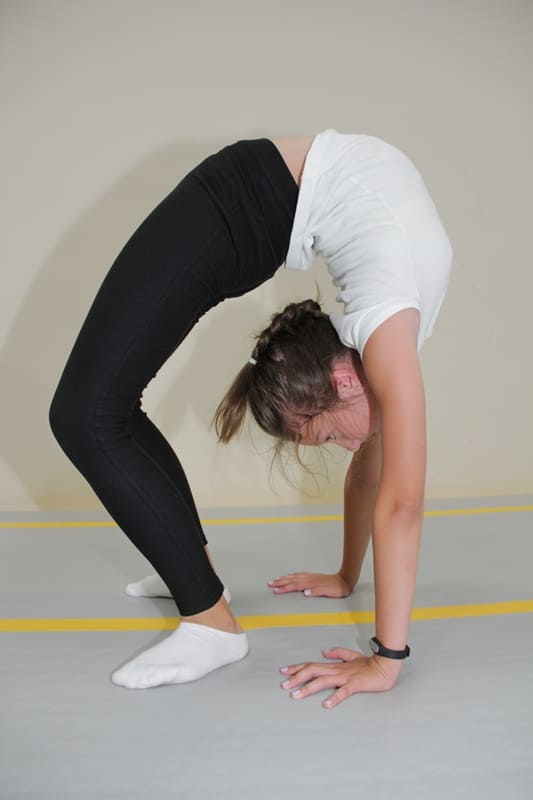
Benefits of healthy lifestyle
A healthy lifestyle has a significant impact on immunity.
According to a survey of those who recently changed their lifestyle, after starting a healthy lifestyle, their well-being, mood, and worldview changed noticeably. In addition, striving to live a healthier life leads to the following improvements:
- The frequency of relapses of chronic diseases is reduced;
- When you wake up, there is no fatigue, you feel a surge of strength;
- Increased endurance during sports training is observed;
- The frequency of colds is reduced and their severity is reduced;
- The skin becomes firmer and cleaner.
In addition, research shows that this lifestyle can reduce the likelihood of developing a number of age-related diseases. In addition, this is an excellent example for loved ones, and, first of all, for children.
Physical activity
Parents should remember that the intellectual development of a child is only half of the compulsory activities from an early age. Children need to harness their energy to be able to concentrate on their studies. Don't forget about playing outdoor games together: football, volleyball, etc. Play active sports. Instead of using public transport, take a walk. In winter, you should also not refuse to visit parks and skating rinks. Don't worry that your child may become overtired. A well-organized daily routine combined with proper nutrition will allow him to always be in good shape.
If you do not have enough free time to play sports with your child on your own, trust the professionals. The trainers of the European Gymnastics Center will help him reach his potential in a playful and positive atmosphere and teach him the basics of a healthy lifestyle.
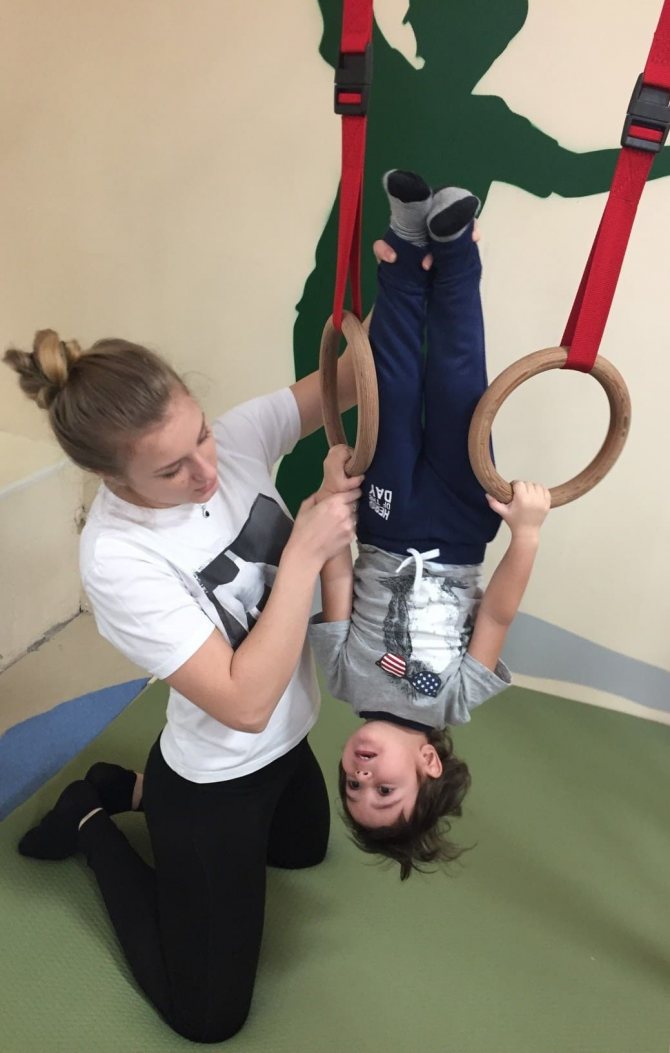
If you have any questions, you can consult with our specialists by calling +7 (495) 477 32 69 or leaving a request for a free trial lesson.
Sign up for a free lesson
All articles


